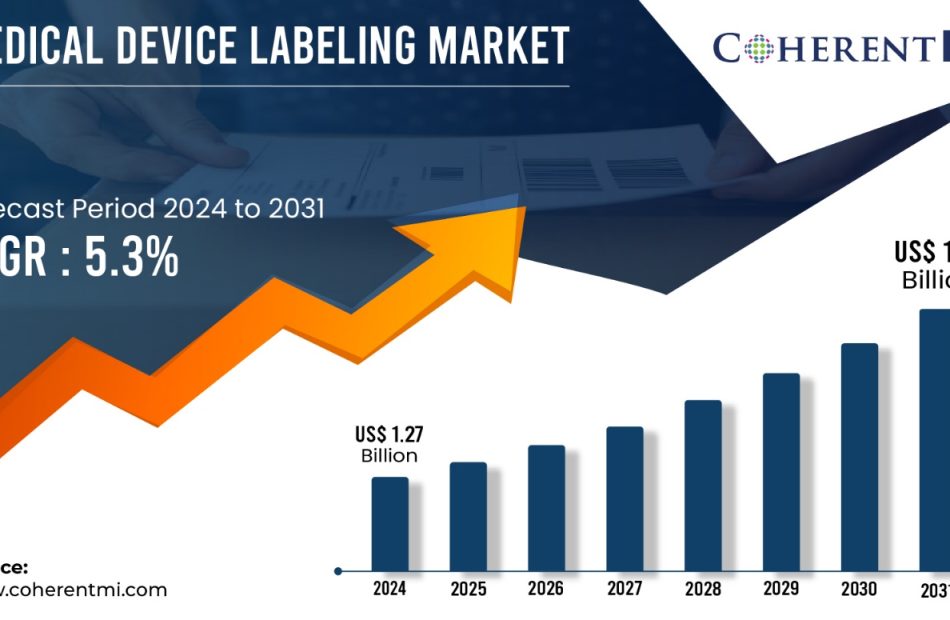Dalio Downplays Next Fed Move as Investors Flag China Risks
(Bloomberg) — The size of the Federal Reserve’s interest rate cut this week won’t be a game changer for global investors, though risks from China’s slowdown continue to weigh on their minds, according to participants at a regional forum.
Most Read from Bloomberg
Bridgewater Associates LP founder Ray Dalio said what the Fed will do this week “doesn’t make a difference” over the longer term as policymakers will ultimately need to keep real interest rates low to allow servicing of mounting debts.
“The Fed has to keep interest rates high enough to satisfy the creditors that they are going to get a real return without having them so high that the debtors have a problem,” Dalio told Bloomberg Television’s Haslinda Amin on the sidelines of the Milken Institute Asia Summit 2024 in Singapore on Wednesday.
Subscribe to the Bloomberg Daybreak podcast on Apple, Spotify or anywhere you listen.
The Fed is widely expected to reduce interest rates later Wednesday after holding borrowing costs at a two-decade high for more than a year. Investors and forecasters are split over whether it will cut by a quarter percentage point or a half point, as officials seek to bring the economy to a soft landing.
“It’s more important to stay focused on the longer term, and particularly for equity investors to think about a five or 10-year horizon,” Capital Group Companies Inc. Vice Chair Jody Jonsson said in a separate interview at the event. Regardless of the size of the cut, Jonsson said it won’t change “anything that I do in my own portfolio.”
Cain International CEO Jonathan Goldstein said return to office policies are as important to the fate of the real estate industry as any interest-rate cuts by the Fed.
But investors have expressed concern over a slowdown in China that’s putting pressure on authorities there to respond with fiscal and monetary stimulus so the world’s second-largest economy can hit its growth target of around 5%.
China is suffering “worse-than-expected scar effects” from the Covid-19 outbreak, said Fang Fenglei, founder and chairman of Hopu Investment Management, citing falling stock markets and foreign direct investments.
Still, while investors hope for stronger stimulus policies to boost growth, China’s leadership “doesn’t care much about short-term interests” due to its long-term rule, “people first” mentality and Chinese-style political economics, Fang said.
Chinese policymakers are wary of repeating what happened previously when a 4 trillion yuan ($564 billion) stimulus it undertook after the financial crisis inflated property prices and led to overcapacity, Fang said.
China’s industrial output marked its longest slowing streak since 2021 in August, with consumption and investment weakening more than expected, based on data published Saturday. Before the data release, the People’s Bank of China signaled that fighting deflation would become a higher priority and indicated more monetary easing ahead.
Don Guo, chief investment officer at Prudential plc, said he’s “never seen so much pessimism” toward China during his entire investment career. Yet, the country is still the “largest growth engine for the world,” he told a panel at Milken, adding that his recent visit to Shenzhen and Guangzhou showed a lot of activity on the ground particularly in the electric vehicle space.
Dalio said a small part of his family office’s portfolio remains invested in China, but pointed out that there are “real issues” in the country.
“There’s a small percentage of our portfolio which is in China and we’ll stay in China through this process,” he said, adding that the country remains a “very attractively priced place” to invest in.
Read this next: Xi’s Great Economic Rewiring Is Cushioning China’s Slowdown
The problems with China’s economy are “a big concern” for both Chinese and Western companies and “are not quickly solved with government action and are going to require a much longer time to work out,” added Capital Group’s Jonsson.
It’s not helping that neither Donald Trump nor Kamala Harris will favor trade with China, Pablo Coballasi, chairman of the Mexican Association of Private Equity and Venture Capital Funds, said on a separate panel.
–With assistance from Russell Ward, Lulu Yilun Chen, Anand Menon and David Ramli.
(Adds comments from Prudential and Mexican industry group executives.)
Most Read from Bloomberg Businessweek
©2024 Bloomberg L.P.
The Gross Law Firm Notifies MacroGenics, Inc. Investors of a Class Action Lawsuit and Upcoming Deadline – MGNX
NEW YORK, Sept. 18, 2024 (GLOBE NEWSWIRE) — The Gross Law Firm issues the following notice to shareholders of MacroGenics, Inc. MGNX.
Shareholders who purchased shares of MGNX during the class period listed are encouraged to contact the firm regarding possible lead plaintiff appointment. Appointment as lead plaintiff is not required to partake in any recovery.
CONTACT US HERE:
https://securitiesclasslaw.com/securities/macrogenics-inc-loss-submission-form-2/?id=103173&from=3
CLASS PERIOD: March 7, 2024 to May 9, 2024
ALLEGATIONS: During the class period, Defendants made material misrepresentations about the safety data from its TAMARACK Phase 2 study of vobramitamab duocarmazine. On May 9, 2024, the investing public learned that the drug was significantly more dangerous than defendants had previously represented. Following this news, MGNX’s stock declined 77.4% due to a drop of $11.36/share.
DEADLINE: September 24, 2024 Shareholders should not delay in registering for this class action. Register your information here: https://securitiesclasslaw.com/securities/macrogenics-inc-loss-submission-form-2/?id=103173&from=3
NEXT STEPS FOR SHAREHOLDERS: Once you register as a shareholder who purchased shares of MGNX during the timeframe listed above, you will be enrolled in a portfolio monitoring software to provide you with status updates throughout the lifecycle of the case. The deadline to seek to be a lead plaintiff is September 24, 2024. There is no cost or obligation to you to participate in this case.
WHY GROSS LAW FIRM? The Gross Law Firm is a nationally recognized class action law firm, and our mission is to protect the rights of all investors who have suffered as a result of deceit, fraud, and illegal business practices. The Gross Law Firm is committed to ensuring that companies adhere to responsible business practices and engage in good corporate citizenship. The firm seeks recovery on behalf of investors who incurred losses when false and/or misleading statements or the omission of material information by a company lead to artificial inflation of the company’s stock. Attorney advertising. Prior results do not guarantee similar outcomes.
CONTACT:
The Gross Law Firm
15 West 38th Street, 12th floor
New York, NY, 10018
Email: dg@securitiesclasslaw.com
Phone: (646) 453-8903

Market News and Data brought to you by Benzinga APIs
© 2024 Benzinga.com. Benzinga does not provide investment advice. All rights reserved.
Study finds 80% reduction in Real Estate brokerage labor costs
BOSTON, Sept. 18, 2024 /PRNewswire/ — AccountTECH, a leading developer of enterprise-class accounting software for the real estate industry, conducted a nationwide survey of outsourced accounting services prices for real estate brokerages. The study reports the average price for outsourcing accounting services as of August 31, 2024.
What does it cost to outsource accounting work for a Real Estate brokerage in 2024
Only some of the work in a Real Estate brokerage can be outsourced. There is fundamental work that needs to be done locally and in person. But some work with sellers, buyers, and agents doesn’t need to be done in person – or doesn’t involve interacting directly with clients at all. Accounting is a great example of work that is ideal for outsourcing.
Before examining the cost of outsourcing accounting labor, AccountTECH’s team examined what real estate brokerages are spending on labor in 2024. For the first six months of 2024, the average labor cost per agent in Real Estate brokerages was $461.99 per agent per month.
This number represents the total labor cost, including all staff, managers, and executives. Obviously, the accounting department is only a portion of the total labor cost in any brokerage. Additionally, the total labor cost per agent per month varied based on the number of offices, managers, and agents at each company.
Current Labor cost per agent per month
The numbers below show the average Total labor cost per agent per month for the first 6 months of 2024
|
Agent |
Avg Real Estate brokerage total labor |
|
0-10 |
$ 788.83 |
|
11-20 |
$ 598.96 |
|
21-50 |
$ 475.39 |
|
51-100 |
$ 357.18 |
|
101-250 |
$ 413.56 |
|
251-500 |
$ 442.58 |
|
500+ |
$ 490.79 |
One important finding is that labor cost per agent begins decreasing as a Company gets bigger. But that trend reverses as a Real Estate company has more than 100 agents. For the larger brokerages, the labor cost of managers and executives increases the unit cost of labor.
Survey results: Outsourced accounting labor cost averages from the AccountTECH survey
AccountTECH finds that generally, when outsourced accounting services are provided to a Real Estate brokerage, the price is generally based on agent count. There is a general assumption that the quantity of accounting work that needs to be performed on a monthly basis is directly related to agent count. For comprehensive outsourcing of all Real Estate brokerage accounting functions, our survey found these average prices as of 8/31/2024.
|
Agent |
Avg price of outsourced accounting |
|
0-10 |
$ 157.64 |
|
11-20 |
$ 50.68 |
|
21-50 |
$ 25.44 |
|
51-100 |
$ 11.82 |
|
101-250 |
$ 8.31 |
|
251-500 |
$ 6.79 |
|
500+ |
$ 5.66 |
* for this survey we asked accounting firms to assume the company had only 2 bank accounts and 1 credit card
One of AccountTECH’s divisions, BrokerOwnerBooks.com, which provides outsourced accounting services, was included in the nationwide pricing survey.
Analysis
Brokerages are struggling with EBITDA margins (or Return on Revenue margins). One key finding of a recent AccountTECH benchmark study was that labor costs in a Real Estate brokerage tend to be relatively fixed and incapable of adjusting quickly to increases or decreases in either closed transaction count or agent count.
The report results make a strong argument for outsourcing some areas of a Real Estate brokerage operation.
About AccountTECH
For over 25 years, AccountTECH’s team of real estate accountants and software engineers have been building tools that increase the efficiency of brokerages. Their latest flagship product is darwin.Cloud – a 4th generation evolution of their popular back office accounting software. The team is constantly adding automation and integrations towards the goal of single-point-of-entry. Their motto is: data entry can happen anywhere, but everything winds up in darwin. In their work with clients, partners and each other, they bring integrity to every interaction and every line of code.
AccountTECH www.accounttech.com (978) 947-3600
For sales inquiries, please contact:
Theresa Hurt theresa@accounttech.com
(978) 710-0071
Media contact:
Rizza Batol
rizza@accounttech.com
978.710.0071
![]() View original content to download multimedia:https://www.prnewswire.com/news-releases/study-finds-80-reduction-in-real-estate-brokerage-labor-costs-302251854.html
View original content to download multimedia:https://www.prnewswire.com/news-releases/study-finds-80-reduction-in-real-estate-brokerage-labor-costs-302251854.html
SOURCE AccountTECH
Market News and Data brought to you by Benzinga APIs
© 2024 Benzinga.com. Benzinga does not provide investment advice. All rights reserved.
Medical Device Labeling Market to Hit US$ 1.78 Billion by 2031 at 5.3% CAGR, Says CoherentMI
Burlingame, Sept. 18, 2024 (GLOBE NEWSWIRE) — CoherentMI published a report, titled, Medical Device Labeling Market is estimated to value at US$ 1.27 Billion in the year 2024, and is anticipated to reach a US$ 1.78 Billion by 2031, with growing at a CAGR of 5.3% during forecast period 2024-2031. With the advancements in medical technology, there has been a rise in the number of medical devices being developed across the world. From simple devices like thermometers to complex ones like MRI machines, each of these devices require labels for identification and providing important information to users. The growing medical devices market directly influences the demand for medical device labeling.

Market Report Scope:
| Report Coverage | Details |
| Market Revenue in 2024: | US$ 1.27 Billion |
| Estimated Value by 2031: | US$ 1.78 Billion |
| Growth Rate: | Poised to grow at a CAGR of 5.3% |
| Historical Data: | 2019–2023 |
| Forecast Period: | 2024–2031 |
| Forecast Units: | Value (USD Million/Billion) |
| Report Coverage: | Revenue Forecast, Competitive Landscape, Growth Factors, and Trends |
| Segments Covered: | By Device Type, By Labeling Format, By End User, By Geography |
| Geographies Covered: | Global |
| Major Players: | Avery Dennison Corporation, 3M Company, Amcor Ltd., Mondi Group plc, Huhtamaki Group and Among Others. |
| Growth Drivers: | • Increasing demand for medical devices due to a growing aging population |
| • Regulatory Requirements for Durable and Clear Device Labelling | |
| Restraints & Challenges: | • High cost associated with advanced labeling technologies |
Market Dynamics:
The growth of the Medical Device Labeling Market is being driven by the increasing demand for customized labels from the medical device manufacturers and growing healthcare expenditure. Manufacturers in the medical device industry are focusing on innovating their medical device packaging solutions to meet stringent regulations and inform patients about the usage of devices. Furthermore, increasing prevalence of chronic diseases is accelerating the demand for diverse medical equipment and devices, thereby fueling the need for proper labeling and packaging.
Key Market Takeaways:
- The global medical device labelling market size is anticipated to witness a CAGR of 5.3% during the forecast period 2024-2031, owing to growing regulatory standards and demand for innovative labelling solutions. On the basis of device type, the implantable device segment is expected to hold a dominant position, owing to critical Traceability and safety needs of implanted medical devices.
- On the basis of labelling format, the regulatory labelling segment is expected to hold a dominant position over the forecast period, due to stringent regulations mandating clear labelling of device details.
- On the basis of region, North America is expected to hold a dominant position over the forecast period, due to well-established healthcare infrastructure and stringent medical device regulations in the region.
- Key players operating in the medical device labelling market include CCL Industries, Inc., LINTEC Corporation, UPM Raflatac, Multi-Color Corporation, Resource Label Group, WS Packaging Group, Faubel, Schreiner Group, Topflight Corporation, Syndicate Label, Matform, Labeltape, Iwata Label, Tapp Label and AptarGroup, Inc. Strategic partnerships and new product launches are some key strategies adopted by these players.
Market Trends:
Regulatory mandates on medical device labeling across various regions are promoting the growth of the market. For instance, European Medical Devices Regulation (MDR) and In Vitro Diagnostic Medical Device Regulation (IVDR) have made UDI labeling implementation mandatory from May 2023 and May 2026 respectively. Moreover, technological advancements in label printing such as digital printing is gaining traction in the market. Digital printing offers benefits such as on-demand printing, variable data, and integration of security features. It allows manufacturers to customize labels as per product and regional requirements without minimum order quantity limitations. Furthermore, growing focus on anti-counterfeiting measures is driving the demand for advanced labeling solutions integrated with traceability features such as barcodes, RFID, and holograms.
Recent Development:
- In December 2023, Flexcon Global has introduced MedFlex, a line of polyester printable films and overlaminates designed for lifetime medical device labeling and tracking. MedFlex meets FDA requirements for unique device identifiers (UDI) across Class I, II, and III devices used externally. The product line simplifies selection for customers by offering a consistent, high-quality, biocompatible adhesive solution.
- In August 2021, Thailand’s Health Ministry, through the TFDA, has updated medical device regulations to enhance safety and quality standards. A key change is the revised labeling requirements, effective from October 31, 2021, for all medical devices in the Thai market, with exemptions for reusable surgical devices and certain export-only devices. Labeling must be prepared in Thai or English within 180 days of customs clearance.
Get a detailed analysis on regions, market segments, and companies: https://www.coherentmi.com/industry-reports/medical-device-labeling-market
By Device Type:
- Implantable Device Labelling: The implantable device segment is expected to hold the largest share in the market. Implantable devices such as pacemakers, implantable cardioverter defibrillators (ICDs), orthopedic implants, dental implants, breast implants, etc. require clear and informative labelling for traceability and safety purposes. Regulatory authorities mandate comprehensive labelling of critical information for implantable devices.
- Non-Implantable device labelling: Non-implantable devices include equipment, instruments, and accessories used for diagnostics and treatment. Clear labelling of parameters is important for the safe use of devices such as ventilators, physiotherapy equipment, monitoring devices, surgical tools, consumables, etc.
- In Vitro Diagnostics Device labelling: In vitro diagnostic devices utilized for testing samples in laboratories also require appropriate labelling of relevant details. Labelling helps in traceability, handling, and reporting of diagnostic test results.
By Labelling Format:
- Regulatory Labelling: The regulatory labelling segment dominates the market owing to stringent regulations surrounding labelling of crucial device details. Medical devices must be labelled with regulatory information such as the brand and model name, serial number, manufacture date, expiration date, prescription status, and appropriate symbols.
- Informative Labelling: Informative labelling provides care providers and users with instructions for use, precise operating parameters, sterilization and disinfection details, waste disposal guidelines, and other handling instructions.
- Promotional Labelling: While promotional labels are not mandatory, some manufacturers utilize distinctive labelling for brand recognition and marketing of their devices.
By End-user:
- Hospitals: A large quantity of medical devices ranging from complex equipment to disposables are utilized across hospitals. Comprehensive labelling ensures traceability and safety within busy hospital settings.
- Clinics/Ambulatory Surgical Centers: Outpatient care facilities also employ a wide range of medical devices requiring correct labelling.
- Home Healthcare: An increasing number of devices are used for home-based care. User-friendly labelling aids safe device handling outside clinical settings.
Medical Device Labeling Market Segmentation:
- Device Type:
- Implantable Devices
- Non-Implantable Devices
- In Vitro Diagnostic (IVD) Devices
- By Labeling Format
- Regulatory Labeling
- Informative Labeling
- Promotional Labeling
- By End User
- Hospitals
- Clinics/Ambulatory Surgical Centers
- Diagnostic Laboratories
- Home Healthcare
Purchase Latest Edition of this Research Report @ https://www.coherentmi.com/industry-reports/medical-device-labeling-market/buynow
The research provides answers to the following key questions:
- What is the estimated growth rate of the market for the forecast period 2024-2031?
- What will be the market size during the estimated period?
- What are the key driving forces responsible for shaping the fate of the Medical Device Labeling market during the forecast period?
- Who are the major market vendors and what are the winning strategies that have helped them occupy a strong foothold in the Medical Device Labeling market?
- What are the prominent market trends influencing the development of the Medical Device Labeling market across different regions?
- What are the major threats and challenges likely to act as a barrier in the growth of the Medical Device Labeling market?
- What are the major opportunities the market leaders can rely on to gain success and profitability?
Key insights provided by the report that could help you take critical strategic decisions?
- Regional report analysis highlighting the consumption of products/services in a region also shows the factors that influence the market in each region.
- Reports provide opportunities and threats faced by suppliers in the Medical Device Labeling industry around the world.
- The report shows regions and sectors with the fastest growth potential.
- A competitive environment that includes market rankings of major companies, along with new product launches, partnerships, business expansions, and acquisitions.
- The report provides an extensive corporate profile consisting of company overviews, company insights, product benchmarks, and SWOT analysis for key market participants.
- This report provides the industry’s current and future market outlook on the recent development, growth opportunities, drivers, challenges, and two regional constraints emerging in advanced regions.
Browse Related Reports:
Anti-Snoring Devices Market: The anti-snoring devices market is estimated to be valued at USD 1.6 Bn in 2024 and is expected to reach USD 2.58 Bn by 2031, growing at a compound annual growth rate (CAGR) of 7.1% from 2024 to 2031.
Implantable Cardiac Monitors Market: The implantable cardiac monitors market is estimated to be valued at USD 1.1 Bn in 2024 and is expected to reach USD 1.6 Bn by 2031, growing at a compound annual growth rate (CAGR) of 5.13% from 2024 to 2031.
Sleep Tech Devices Market: The sleep tech devices market is estimated to be valued at USD 19.9 Bn in 2024 and is expected to reach USD 61 Bn by 2031, growing at a compound annual growth rate (CAGR) of 17.3% from 2024 to 2031.
Glycated Haemoglobin Testing Market: The glycated haemoglobin testing market is estimated to be valued at USD 239 Mn in 2024 and is expected to reach USD 426 Mn by 2031, growing at a compound annual growth rate (CAGR) of 8.6% from 2024 to 2031.
Author of this marketing PR:
Ravina Pandya, PR Writer, has a strong foothold in the market research industry. She specializes in writing well-researched articles from different industries, including food and beverages, information and technology, healthcare, chemical and materials, etc. With an MBA in E-commerce, she has an expertise in SEO-optimized content that resonates with industry professionals.
About Us:
At CoherentMI, we are a leading global market intelligence company dedicated to providing comprehensive insights, analysis, and strategic solutions to empower businesses and organizations worldwide. Moreover, CoherentMI is a subsidiary of Coherent Market Insights Pvt Ltd., which is a market intelligence and consulting organization that helps businesses in critical business decisions. With our cutting-edge technology and experienced team of industry experts, we deliver actionable intelligence that helps our clients make informed decisions and stay ahead in today’s rapidly changing business landscape.

Mr. Shah CoherentMI, U.S.: +1-650-918-5898 U.K: +44-020-8133-4027 Australia: +61-2-4786-0457 INDIA: +91-848-285-0837 Email: sales@coherentmi.com Website: https://www.coherentmi.com
Market News and Data brought to you by Benzinga APIs
© 2024 Benzinga.com. Benzinga does not provide investment advice. All rights reserved.
IES Hldgs Recent Insider Activity
AL ET JEFFREY GENDELL, Chief Executive Officer at IES Hldgs IESC, executed a substantial insider sell on September 16, according to an SEC filing.
What Happened: A Form 4 filing with the U.S. Securities and Exchange Commission on Monday outlined that GENDELL executed a sale of 150,000 shares of IES Hldgs with a total value of $23,918,699.
Monitoring the market, IES Hldgs‘s shares up by 0.48% at $161.02 during Tuesday’s morning.
Get to Know IES Hldgs Better
IES Holdings Inc owns and manages subsidiaries that design and installs integrated electrical and technology systems and provide infrastructure products and services. It has four business segments; Communications, Residential, Infrastructure Solutions and Commercial & Industrial. Majority of the revenue for the company is generated from its Residential segment in which the company provides electrical installation services for single-family housing and multi-family apartment complexes, as well as heating, ventilation and air conditioning (HVAC) and plumbing installation services. Through this segment it also provides services for the installation of residential solar power, both for new construction and existing residences.
Financial Insights: IES Hldgs
Revenue Growth: IES Hldgs’s revenue growth over a period of 3 months has been noteworthy. As of 30 June, 2024, the company achieved a revenue growth rate of approximately 31.48%. This indicates a substantial increase in the company’s top-line earnings. As compared to competitors, the company surpassed expectations with a growth rate higher than the average among peers in the Industrials sector.
Profitability Metrics:
-
Gross Margin: Achieving a high gross margin of 25.35%, the company performs well in terms of cost management and profitability within its sector.
-
Earnings per Share (EPS): IES Hldgs’s EPS is notably higher than the industry average. The company achieved a positive bottom-line trend with a current EPS of 2.71.
Debt Management: The company maintains a balanced debt approach with a debt-to-equity ratio below industry norms, standing at 0.07.
Valuation Metrics:
-
Price to Earnings (P/E) Ratio: With a lower-than-average P/E ratio of 18.85, the stock indicates an attractive valuation, potentially presenting a buying opportunity.
-
Price to Sales (P/S) Ratio: With a P/S ratio of 1.19 below industry standards, the stock shows potential undervaluation, making it an appealing investment option for those focusing on sales performance.
-
EV/EBITDA Analysis (Enterprise Value to its Earnings Before Interest, Taxes, Depreciation & Amortization): IES Hldgs’s EV/EBITDA ratio, lower than industry averages at 10.17, indicates attractively priced shares.
Market Capitalization Perspectives: The company’s market capitalization falls below industry averages, signaling a relatively smaller size compared to peers. This positioning may be influenced by factors such as perceived growth potential or operational scale.
Now trade stocks online commission free with Charles Schwab, a trusted and complete investment firm.
Delving Into the Significance of Insider Transactions
Insider transactions, although significant, should be considered within the larger context of market analysis and trends.
Considering the legal perspective, an “insider” is defined as any officer, director, or beneficial owner holding more than ten percent of a company’s equity securities, according to Section 12 of the Securities Exchange Act of 1934. This includes executives in the c-suite and major hedge funds. These insiders are mandated to disclose their transactions through a Form 4 filing, to be submitted within two business days of the transaction.
Pointing towards optimism, a company insider’s new purchase signals their positive anticipation for the stock to rise.
Nevertheless, insider sells may not necessarily indicate a bearish view and can be influenced by various factors.
Exploring Key Transaction Codes
When dissecting transactions, the focal point for investors is often those occurring in the open market, meticulously detailed in Table I of the Form 4 filing. A P in Box 3 denotes a purchase, while S signifies a sale. Transaction code C indicates the conversion of an option, and transaction code A denotes a grant, award, or other acquisition of securities from the company.
Check Out The Full List Of IES Hldgs’s Insider Trades.
This article was generated by Benzinga’s automated content engine and reviewed by an editor.
Market News and Data brought to you by Benzinga APIs
© 2024 Benzinga.com. Benzinga does not provide investment advice. All rights reserved.
Shiba Inu Team Says Launching K9 Finance Liquid Staking On Shibarium Tomorrow: Are SHIB Burns Set To Accelerate From Here On Now?
The official Shiba Inu SHIB/USD account on X has announced that tomorrow at noon EDT, the highly anticipated liquid staking platform, K9 Finance, will launch on the Shibarium network.
What Happened: This new platform will allow users to engage in liquid staking for Bone ShibaSwap (CRYPTO: BONE), a key token in the Shiba Inu ecosystem.
The introduction of liquid staking is expected to significantly benefit SHIB by increasing both the total value locked on Shibarium and the transaction volume on the network, according to the post. These factors are crucial for accelerating SHIB token burns, which reduce the circulating supply and potentially enhance the token’s value over time.
Liquid staking is a mechanism that allows users to earn ETH staking rewards while keeping their assets liquid. Traditionally, when participating in proof of stake networks, users would lock up their assets for the opportunity to contribute to network security and earn staking rewards. However, the process of traditional staking results in illiquid assets and missed opportunities for investors.
Why It Matters: The launch of Shibarium’s liquid staking platform comes at a crucial time for the cryptocurrency market. Prominent trader Michaël van de Poppe recently predicted a significant bull run in the cryptocurrency market, coinciding with the Federal Reserve’s upcoming interest rate decision.
Additionally, the broader cryptocurrency market, including Bitcoin BTC/USD, Ethereum ETH/USD, and Dogecoin DOGE/USD, has been trading higher ahead of the Federal Open Market Committee meeting.
In another notable development, former President Donald Trump has entered the DeFi space with the launch of World Liberty Financial (WLFI). This new platform aims to capitalize on the growing interest in decentralized finance and blockchain technology.
Read Next:
Image Via Shutterstock
This story was generated using Benzinga Neuro and edited by Kaustubh Bagalkote
Market News and Data brought to you by Benzinga APIs
© 2024 Benzinga.com. Benzinga does not provide investment advice. All rights reserved.
I'm Netting $800k From My Home Sale. Can I Avoid Taxes While Downsizing for Retirement?
SmartAsset and Yahoo Finance LLC may earn commission or revenue through links in the content below.
When you sell a primary residence, the IRS allows you to exclude from your capital gains taxes the first $250,000 of profits if you file single or $500,000 of profits if you file jointly. You must include any surplus of those amounts in your taxable capital gains for the year, though. So, what if you sell your house for an $800,000 profit? You will probably owe taxes on a good portion of that sale, although you’ll get a significant tax break in the process.
Do you have questions about downsizing for retirement or retirement planning in general? Speak with a financial advisor today.
How Capital Gains Work on a Home Sale
When you sell any asset, including anything from real estate to investments to personal property, the profits are considered capital gains. The IRS calculates those profits as the following:
Sale Price – Tax Basis = Taxable Capital Gains
The sale price is whatever amount you received for selling the property, and the tax basis is the amount of capital you have invested in the underlying asset. For real estate, this generally includes:
-
The price paid to buy it, including legal fees, title insurance and costs of setting up necessary services like utilities
-
Costs of improvements and upgrades to the building or property (generally considered any costs that improve the property or extend its lifespan)
-
Some costs involved with selling the property, including realtor’s fees, advertising and costs involved with showing the property
However, this generally does not include property taxes, financing or interest costs, costs of use and occupancy and necessary maintenance.
So, for example, say that you buy a house for $500,000. You then have the following hypothetical expenses:
-
$40,000 of mortgage interest
-
$25,000 to remodel the kitchen
-
$10,000 to install a new boiler when the old one breaks
-
$6,000 to repair a weak point in the roof
If you now sell the house, your cost basis would be $535,000, as the home cost you $500,000 and the kitchen and boiler both count as upgrades to the property ($25,000, plus $10,000). Even though the old boiler was broken, by installing a new one rather than repairing the old it counts as an update.
Your financing costs do not count, nor do the necessary repairs you made to the roof. Repairs are considered costs to maintain the property’s existing value rather than upgrades to improve the property’s value.
If, down the road, you then sell the house for $700,000, you would have $165,000 of potentially taxable capital gains ($700,000 – $535,000 = $165,000).
If you have questions about retirement planning, consider speaking with a financial advisor.
What Is the Home Sale Exclusion?
When you sell a primary residence, the IRS allows you to take a home sale exclusion, otherwise known as a Section 121 exclusion. Under this rule, you can exclude a certain amount of primary residence sale profits from your taxable capital gains. For single filers, this number is $250,000, and for joint filers, it’s $500,000.
You must meet certain conditions in order to claim this exclusion. Most notably:
-
You must have owned the home for 24 of the last 60 months (can be nonconsecutive)
-
You must have used the home as your primary residence for 24 of the last 60 months (can be nonconsecutive)
-
You must not have claimed the home ownership exclusion in the past two years
Individuals who meet these conditions can first eliminate the exclusion amount from their home sale profits, then include any remainder in their taxable capital gains for the year. Individuals who do not meet these conditions must include all of their profits from the sale of the property in their taxable capital gains for the year.
So, for example, say that you have sold your house and netted $800,000 after accounting for the property’s tax basis. Here’s how you’d break this down:
-
If your home does not qualify for the Section 121 exclusion, you have taxable capital gains of $800,000.
-
If your home does qualify for the Section 121 exclusion, you have taxable capital gains of either $550,000 as a single filer ($800,000 – $250,000 = $550,000) or $300,000 as a joint filer ($800,000 – $500,000 = $300,000)
The advantage of the home sale exclusion is that it’s simple and offers a considerable amount. Most households will be able to avoid taxes on much or all of the profits from the sale of their home under this law, and the rules are very straightforward. Consider consulting a financial advisor to plan a tax strategy for your home sale and beyond.
Bottom Line
When you sell your home, you can take a $250,000 (single) or $500,000 (joint) exclusion from your capital gains. After that, you must pay taxes on any remaining profit from the sale. This is a significant and straightforward tax break, but it will mean at least some taxes for especially high-profit sales.
Home Sale Tips
-
A financial advisor can help you build a comprehensive retirement plan that could include downsizing. Finding a financial advisor doesn’t have to be hard. SmartAsset’s free tool matches you with up to three vetted financial advisors who serve your area, and you can have a free introductory call with your advisor matches to decide which one you feel is right for you. If you’re ready to find an advisor who can help you achieve your financial goals, get started now.
-
For many households, their house is their single most valuable asset. That can be a very good thing, since you might literally be sitting on a strong retirement plan, but it also requires careful management. If you are thinking about selling your house, consider these steps to make sure you do it carefully.
-
Keep an emergency fund on hand in case you run into unexpected expenses. An emergency fund should be liquid — in an account that isn’t at risk of significant fluctuation like the stock market. The tradeoff is that the value of liquid cash can be eroded by inflation. But a high-interest account allows you to earn compound interest. Compare savings accounts from these banks.
-
Are you a financial advisor looking to grow your business? SmartAsset AMP helps advisors connect with leads and offers marketing automation solutions so you can spend more time making conversions. Learn more about SmartAsset AMP.
©iStock.com/andresr, ©iStock.com/twinsterphoto
The post I’m Selling My House and Netting $800k. Can I Avoid Taxes While Downsizing for Retirement? appeared first on SmartReads by SmartAsset.
10 ETFs Investors Secretly Bought Before The Fed's Make-Or-Break Interest Rate Call
The Federal Reserve is widely anticipated to cut interest rates at its upcoming Federal Open Market Committee meeting, with the decision set for release on Wednesday at 2 p.m. ET.
The central bank has maintained the federal funds rate at 5.25%-5.5% since September 2023 and this week’s rate reduction would be the first since March 2020, signaling a marked shift from the restrictive monetary policy stance implemented to combat soaring inflation.
Rate Cut Expectations: Will The Fed Opt For 25 Or 50 Basis Points?
The key question on everyone’s mind is the magnitude of the rate cut. Will the Fed opt for a cautious 25-basis-point reduction, or will it make a bolder move with a 50-basis-point cut, as seen at the start of previous rate-cutting cycles?
Market sentiment currently differs from Wall Street economist consensus. Traders are pricing in a 63% probability of a 50-basis-point cut, as per the CME FedWatch tool.
Among Wall Street analysts, instead, there is an overwhelming consensus on a more conservative 25-basis-point reduction, but JPMorgan Chase & Co. stands out as the notable exception, forecasting a 50-basis-point cut.
According to the biggest U.S. bank, interest rates are about 150 basis points above neutral levels. Therefore, a 25-basis-point cut per meeting would take almost a year to align the policy back to a neutral stance.
This strengthens the case for frontloading rate cuts at the start of the cycle, particularly given that, in hindsight, a July commencement might have been more appropriate.
Regardless of whether the Fed chooses a 25 or 50-basis-point reduction, analysts expect a series of cuts to continue through 2024 and 2025.
Investor Moves Ahead of the Rate Cut: Top 10 ETFs Investors Bought Last Week
In the week leading up to this highly anticipated rate cut, investors reshuffled their portfolios, resulting in significant inflows into various exchange-traded funds (ETFs) that may indicate a strategic tilt toward assets poised to benefit from a lower interest rate environment.
To identify these trends, Benzinga analyzed data from VettaFi’s etfdb.com, and found that investors displayed a strong preference for value-oriented ETFs.
Notable among these were the iShares MSCI EAFE Value ETF EFV and SPDR Portfolio S&P 500 Value ETF SPYV, signaling a tilt towards assets that may offer stability and a defensive hedge as the macro regime shifts.
As a traditional beneficiary of lower interest rates, gold has also been on investors’ radar, with prices repeatedly hitting record highs over the last week, supported by strong inflows into the SPDR Gold Shares GLD.
Also worth noting is the interest in the tech sector, particularly semiconductors, with the VanEck Semiconductor ETF SMH seeing substantial inflows.
Additionally, investors pursued speculative and leveraged strategies on the Nasdaq 100, likely interpreted as a bet to the rising chance of a larger 50-basis-point cut.
Investors bought into both ProShares Ultra QQQ QLD, which aims to deliver twice the daily performance of the Nasdaq 100, and the ProShares UltraPro QQQ TQQQ, which targets three times the daily performance of the index.
Rounding out the list, the popular small-cap fund iShares Russell 2000 ETF IWM attracted over half a billion dollars in inflows last week, signaling investors’ growing interest in smaller, domestically-focused companies as they are poised to benefit from declining borrowing costs.
| ETF Name | 1 Week Inflows ($MM) |
|---|---|
| iShares MSCI EAFE Value ETF | $1,135.48 |
| SPDR Portfolio S&P 500 ETF SPLG | $820.85 |
| Vanguard Intermediate-Term Corporate Bond ETF VCIT | $818.30 |
| SPDR Portfolio S&P 500 Value ETF | $775.06 |
| VanEck Semiconductor ETF | $717.11 |
| Vanguard S&P 500 ETF VOO | $698.27 |
| SPDR Gold Shares | $648.41 |
| ProShares Ultra QQQ | $646.66 |
| ProShares UltraPro QQQ | $560.15 |
| iShares Russell 2000 ETF | $552.24 |
Read now:
Image created using artificial intelligence via Midjourney.
Market News and Data brought to you by Benzinga APIs
© 2024 Benzinga.com. Benzinga does not provide investment advice. All rights reserved.
SIMPLY SOLVENTLESS PROVIDES Q3 2024 GUIDANCE INCLUDING RECORD PROJECTED QUARTERLY REVENUE AND EIGHTH STRAIGHT QUARTER OF NET INCOME PROFIT, AND ANNOUNCES UPCOMING PRODUCT LAUNCHES
/NOT FOR DISTRIBUTION TO U.S. NEWS WIRE SERVICES OR FOR DISSEMINATION IN THE UNITED STATES./
CALGARY, AB, Sept. 17, 2024 /CNW/ – Simply Solventless Concentrates Ltd. HASH (“SSC“) is pleased to provide Q3 2024 gross revenue, adjusted EBITDA and normalized net income guidance including record projected quarterly gross revenue and the continuation of SSC’s quarterly positive adjusted EBITDA and normalized net income streak to ten and eight quarters respectively. SSC is also pleased to announce its upcoming product launches.
Jeff Swainson, President and CEO of SSC, stated: “Q3 2024 is shaping up to be a transformative quarter for SSC with strong organic revenue growth in Astrolab, Frootyhooty and Lamplighter being complimented by the closing of our CannMart Inc. acquisition on September 12, 2024. The deployment of capital into CannMart Inc.’s Roilty and Zest Cannabis inventory is ramping revenue, and material cost reductions are being achieved through our CannMart restructuring efforts. Overall, Q3 2024’s projected annualized gross revenue, adjusted EBITDA and normalized net income of $28,000,000, $4,000,000, and $3,600,000 respectively. SSC’s projected September 2024 annualized gross revenue of $33,000,000 demonstrates our current revenue growth trajectory as we continue towards our goal of $40,000,000 annualized gross revenue, $6,200,000 annualized adjusted EBITDA and $6,000,000 annualized normalized net income.”
Adjusted EBITDA and normalized net income are non-IFRS measures. See Non-IFRS Financial Measures, below.
Q3 2024 Guidance
SSC projects record quarterly gross revenue during Q3 2024 of approximately $7,000,000 (Q2 2024 – $4,232,663, Q3 2023 – $1,479,055), representing growth rates of 65% quarter over quarter and 373% compared to the same quarter last year. SSC’s projected revenue growth is attributable to the organic growth of SSC’s brands Astrolab and Frootyhooty and SSC’s acquisition of CannMart Inc., including the brands Roilty and Zest Cannabis, on September 12, 2024.
SSC projects Q3 2024 adjusted EBITDA of approximately $1,000,000 (Q2 2024 – $952,986, Q3 2023 – $270,009) (see Non-IFRS Financial Measures, below), representing growth rates of 5% quarter over quarter and 270% compared to the same quarter last year, and normalized net income of approximately $900,000 (Q2 2024 – $890,815, Q3 2023 – $190,896) (see Non-IFRS Financial Measures, below), consistent with the prior quarter and a growth rate of 372% compared to the same quarter last year.
During Q3 2024 SSC has had slightly lower B2B and tolling revenue compared to Q2 2024 due to seasonality, as Q3 has historically lower B2B and tolling sales. This is expected to slightly reduce gross margins for Q3 2024. B2B and tolling revenue is expected to return to Q2 2024 levels during Q4 2024. SSC also expects that cost synergies related to the acquisition of CannMart Inc. will be fully realized by early Q4 2024, contributing to profitability.
SSC’s streak of positive adjusted EBITDA and normalized net income is expected to extend to ten and eight quarters respectively.
Year to Date (Nine Months Ended September 30, 2024)
On a year-to-date basis, SSC projects record gross revenue for the nine months ended September 30, 2024 of approximately $14,354,895 (September 30, 2023 – $5,182,777), representing a growth rate of 177% compared to the same period in the prior year, adjusted EBITDA of approximately $2,564,557 (September 30, 2023 – $2,166,876) (see Non-IFRS Financial Measures, below), representing a growth rate of 18% compared to the same period in the prior year, and normalized net income of approximately $2,337,230 (September 30, 2023 – $1,869,706) (see Non-IFRS Financial Measures, below), representing a growth rate of 25% compared to the same period in the prior year.
Upcoming Product Launches
SSC is pleased to announce that it is launching 27 new products in Alberta in the near future, as follows:
- Astrolab Launching October 2024:
-
- Astrolab Galactic Sour Live Rosin Star Solventless Gummies.
- Astrolab Galactic Sweet Live Rosin Star Solventless Gummies.
- Astro Sampler 3-Pack Live Rosin Infused Pre-rolls.
- Astrolab Squirt 90-189u Premium Cold Cure Live Rosin.
- Astrolab Banjo 90-189u Premium Cold Cure Live Rosin.
-
- Astrolab Launching November 2024:
-
- Astrolab Interstellar Live Rosin Cream Soda.
- Astrolab Interstellar Rocket Lime Live Rosin Soda.
- Astrolab Summer Cherry Punch Live Rosin Infused Pre-rolls.
-
- Frootyhooty Launching October 2024:
-
- Frootyhooty Poppin’ Peach Full Spectrum Loops.
- Frootyhooty Wild Watermelon Coconut Full Spectrum Wedges.
- Frootyhooty Pink Lemonade Full Spectrum Sours.
-
- Frootyhooty Launching November 2024:
-
- Frootyhooty Pink Lemonade Diamonds & Live Rosin Sauce.
- Frootyhooty Pink Lemonade Distillate + Live Rosin 510 vape cart 1g.
- Frootyhooty Pink Lemonade Distillate + Live Rosin Disposable 1g.
-
- Roilty Launching October 2024:
-
- Roil Lemon Haze Shatter.
-
- Roilty Launching November 2024:
-
- Roil Indica Live Resin Reserve Disposable Vape.
- Roil Sativa Live Resin Reserve Disposable Vape.
- Roil Sunrise Sativa Shatter.
- Roil Sunset Indica Shatter.
-
- Lamplighter Launching October 2024:
-
- Honeydew Lime Prefilled Vape Cartridge.
-
- Lamplighter Launching November 2024:
-
- Lamplighter Tiger Berry Liquid Diamond Dabber.
-
- Uncommon Cannabis Launching November 2024:
-
- Uncommon Mango Crush.
- Uncommon Dream Catcher.
- Uncommon Pink Ghost.
- Uncommon White Hot Guava.
-
- Rilaxe Launching November 2024:
-
- Rilaxe Ménage à Trois 3×0.7g.
- Rilaxe Morning Sex 1x1g.
-
SSC is also pleased to announce the following two products that are being launched in Ontario in November 2024:
- Astrolab Interstellar Live Rosin Cream Soda.
- Astrolab Interstellar Rocket Lime Live Rosin Soda.
About Simply Solventless Concentrates Ltd.
SSC is a public company incorporated under the Business Corporations Act (Alberta). SSC’s mission is to provide pure, potent, terpene-rich ready to consume cannabis products to discerning cannabis consumers. For more information regarding SSC, please see www.simplysolventless.ca.
SSC has approximately 76.3 million common shares outstanding (basic), of which approximately 20% are held by insiders. Of SSC’s outstanding common shares, approximately 15.7 million (21%) are escrowed pursuant to TSX Venture Exchange policies. Further details with respect to SSC’s escrowed securities can be found in SSC’s filing statement dated October 31, 2023. Information related to Q2 2024, including SSC’s financial statements and MD&A, are available on SSC’s SEDAR+ profile at www.sedarplus.ca.
Notice on Forward Looking Information
This press release contains forward-looking statements and forward-looking information (collectively, “forward-looking statements”) within the meaning of applicable securities laws. Any statements that are contained in this press release that are not statements of historical fact may be deemed to be forward-looking statements. Forward-looking statements are often identified by terms such as “may”, “should”, “anticipate”, “will”, “estimates”, “believes”, “intends”, “expects”, “projected”, “approximately” and similar expressions which are intended to identify forward-looking statements. More particularly and without limitation, this press release contains forward looking statements concerning SSC’s expected results for Q3 2024, SSC’s goals for annualized revenue by 2023 exit, the synergies expected from integrating CannMart Inc. into SSC’s operations, SSC’s expected product releases, capitalizing on SSC’s business plan and SSC’s expected growth, results of operations and performance. SSC cautions that all forward-looking statements are inherently uncertain, and that actual performance may be affected by a number of material factors, assumptions and expectations, many of which are beyond the control of SSC, including expectations and assumptions concerning SSC, the timing and market acceptance of products, competition in SSC’s markets, SSC’s reliance on customers, fluctuations in interest rates, SSC’s ability to maintain good relations with its customers, employees and other stakeholders, changes in law or regulations, SSC’s ability to protect its intellectual property, as well as other risks and uncertainties, including those described in SSC’s filings available on SEDAR+ at www.sedarplus.ca. The reader is cautioned that assumptions used in the preparation of any forward-looking statements may prove to be incorrect. Events or circumstances may cause actual results to differ materially from those predicted as a result of numerous known and unknown risks, uncertainties and other factors, many of which are beyond the control of SSC. The reader is cautioned not to place undue reliance on any forward-looking statements. Such information, although considered reasonable by management at the time of preparation, may prove to be incorrect and actual results may differ materially from those anticipated. Forward-looking statements contained in this press release are expressly qualified by this cautionary statement.
The forward-looking statements contained in this press release are made as of the date of this press release, and SSC does not undertake any obligation to update publicly or to revise any of the included forward-looking statements, whether as a result of new information, future events or otherwise, except as expressly required by securities law.
Future Oriented Financial Information
This press release contains future-oriented financial information and financial outlook information (collectively, “FOFI”) about gross revenue, adjusted EBITDA and normalized net income of SSC, which are subject to the same assumptions, risk factors, limitations and qualifications as set forth in the above paragraphs. FOFI contained in this document was approved by management as of the date of this document and was provided for the purpose of providing further information about SSC’s future business operations. SSC and its management believe that FOFI has been prepared on a reasonable basis, reflecting management’s best estimates and judgments, and represent, to the best of management’s knowledge and opinion, the SSC’s expected course of action. However, because this information is highly subjective, it should not be relied on as necessarily indicative of future results. SSC disclaims any intention or obligation to update or revise any FOFI contained in this document, whether as a result of new information, future events or otherwise, unless required pursuant to applicable law. Readers are cautioned that the FOFI contained in this document should not be used for purposes other than for which it is disclosed herein. Differences in the timing of capital expenditures or revenues and variances in production estimates can have a significant impact on the key performance measures included in SSC’s guidance. SSC’s actual results may differ materially from these estimates.
Non-IFRS Financial Measures
This press release includes references to “adjusted EBITDA” and “normalized net income”, which are not defined under International Financial Reporting Standards (IFRS). The intent of these non-IFRS measures is to provide additional useful information to investors and analysts. These non-IFRS measures do not have a standardized meaning prescribed by IFRS and are therefore unlikely to be comparable to similar measures presented by other entities. As such, these non-IFRS measures should not be considered in isolation or used as a substitute for measures of performance prepared in accordance with IFRS.
Adjusted EBITDA is calculated as income before interest, taxes, depreciation and amortization expenses. Adjusted EBITDA is considered as a useful measure by management of SSC to understand the profitability of SSC excluding the effects of capital structure, taxation and depreciation, but may not be appropriate for other purposes. Adjusted EBITDA is not defined under IFRS and therefore should not be considered an alternative to, or more meaningful than, income (loss) and comprehensive income (loss).
The following table reconciles net income (loss) to EBITDA:
|
Three months ended |
Six months ended |
|||
|
Jun 30, 2024 $ |
Jun 30, 2023 $ |
Jun 30, 2024 $ |
June 30, 2023 $ |
|
|
Net and comprehensive (loss) income |
1,220,798 |
1,161,241 |
1,723,244 |
1,920,070 |
|
Add (deduct): |
||||
|
Depreciation and amortization |
13,324 |
11,549 |
26,558 |
22,714 |
|
Net interest (income) expense |
48,937 |
89,040 |
100,769 |
195,344 |
|
EBITDA |
1,282,969 |
1,261,830 |
1,850,571 |
2,138,128 |
The following table reconciles net income (loss) to Adjusted EBITDA:
|
Three months ended |
Six months ended |
|||
|
Jun 30, 2024 $ |
Jun 30, 2023 $ |
Jun 30, 2024 $ |
Jun 30, 2023 $ |
|
|
Net and comprehensive (loss) income |
1,220,798 |
1,161,241 |
1,723,244 |
1,920,070 |
|
Add (deduct): |
||||
|
Depreciation and amortization |
13,324 |
11,549 |
26,558 |
22,714 |
|
Net interest (income) expense |
48,937 |
89,040 |
100,769 |
195,344 |
|
Gain on settlement |
(431,671) |
– |
(431,671) |
– |
|
Gain on disposal |
– |
(353,833) |
– |
(353,833) |
|
Share compensation expense |
101,688 |
30,063 |
145,657 |
112,576 |
|
Adjusted EBITDA |
952,986 |
938,060 |
1,564,557 |
1,896,871 |
Normalized net income is calculated as net income less any gain settlement or disposal, plus the share compensation expense. Normalized Net Income is considered as a useful measure by management of SSC to understand the profitability of SSC excluding the effects of certain non-operating items.
The following table reconciles net income (loss) to Normalized Net Income:
|
Three months ended |
Six months ended |
|||
|
Jun 30, 2024 $ |
Jun 30, 2023 $ |
Jun 30, 2024 $ |
Jun 30, 2023 $ |
|
|
Net and comprehensive (loss) income |
1,220,798 |
1,161,241 |
1,723,244 |
1,920,070 |
|
Add (deduct): |
||||
|
Gain on settlement |
(431,671) |
– |
(431,671) |
– |
|
Gain on disposal |
– |
(353,833) |
– |
(353,833) |
|
Share compensation expense |
101,688 |
30,063 |
145,657 |
112,576 |
|
Normalized Net Income |
890,815 |
837,471 |
1,437,230 |
1,678,813 |
This press release shall not constitute an offer to sell or the solicitation of an offer to buy any securities in any jurisdiction.
Neither TSX Venture Exchange nor its Regulation Services Provider (as that term is defined in the policies of the TSX Venture Exchange) accepts responsibility for the adequacy or accuracy of this release.
SOURCE Simply Solventless Concentrates Ltd.

![]() View original content to download multimedia: http://www.newswire.ca/en/releases/archive/September2024/17/c4047.html
View original content to download multimedia: http://www.newswire.ca/en/releases/archive/September2024/17/c4047.html
© 2024 Benzinga.com. Benzinga does not provide investment advice. All rights reserved.
Explainer-What does a Fed rate cut mean for American households?
By Lindsay Dunsmuir and Ann Saphir
(Reuters) – The Federal Reserve is set to cut U.S. short-term borrowing costs on Wednesday, a watershed moment that should start to ease some of the financial pressures everyday consumers have felt over the two and a half years that the central bank has battled with high inflation.
The Fed, after 5.25 percentage points of increases between March 2022 and July 2023, is seen deciding between a quarter-percentage point cut in its key rate to the 5.00%-5.25% range, or a half-point reduction to 4.75%-5.00% to address rising worries about the cooling labor market.
Whether it starts big or small, the central bank is widely expected to keep lowering rates to around 4.5% or even 4% by the end of the year, with more cuts in 2025.
Fed policymakers have said that they don’t see the policy rate returning to the sub-2% levels that prevailed for more than a decade before 2022. That era’s low mortgage rates, often under 4%, aren’t coming back any time soon.
Still, a lower policy rate should translate to cheaper borrowing costs for most kinds of loans while, on average, paychecks are now rising faster than prices as inflation has cooled substantially. Even so, each trip to the grocery store is a reminder that today’s dollars don’t go as far they did just a few years ago.
So how will rate cuts affect ordinary Americans?
SOFTENING THE LANDING
The Fed’s aggressive rate hikes, begun only after inflation had surged, were initially expected to cause an economic slowdown resulting in job losses.
Instead, the economy so far has averted recession, even as inflation by the Consumer Price Index dropped to 2.5% from a mid-2022 peak over 9%. Employers kept hiring, and the unemployment rate, even with its recent rise to 4.2%, is still low by historical standards.
In cutting rates, the Fed is trying to keep it like that. Already, hiring and wage growth have slowed, the number of job openings per worker has dropped, job search times are lengthening, and the number of workers settling for part-time work when they prefer full-time employment has risen.
Lower interest rates are aimed at easing those trends by making it less expensive for businesses and households to borrow and therefore spend more freely.
Whether the Fed can calibrate its rate cuts so as to achieve what economists call a soft landing – the policy coup of guiding an economy through a period of tight monetary policy to stifle inflation without jarring the labor market – will be one of the most important ways its actions will affect regular Americans.
“The challenge is that soft landings are rare and as much about luck as skill,” says KPMG’s Diane Swonk, who expects the Fed policy rate to be at 4.25%-4.50% by year end. “We have never achieved one in the wake of an actual bout of inflation.”
COST OF CREDIT
Borrowing costs – rates on home loans, credit cards, auto loans and student loans – rose sharply as the Fed increased its policy rate.
Some of those rates, notably mortgages, have fallen quite a bit as the Fed has telegraphed its intentions for rate cuts: The average 30-year fixed rate mortgage recently fell to 6.20%, according to Freddie Mac, from a high of nearly 8% last October.
This week’s rate cut, in other words, “has already been baked in,” says Marcia Kaufman, CEO of Bayport Funding. Mortgage rates could fall more if the Fed signals deeper cuts than currently anticipated.
Other rates, for personal loans, credit cards and auto loans, are typically more closely tied to actual changes in the Fed’s policy rate and should drop soon after the Fed acts, says Parthenon’s Gregory Daco.
But the Fed isn’t expected to slash its policy rate, so those rates – currently above 8% for five-year bank car loans, and more than 21% for bank credit cards, Fed data shows – likely won’t move dramatically either.
As for student loans, if the loan is from the federal government it won’t move at all. Rates on loans from private lenders will.
SAVINGS AND INVESTMENTS
As the Fed raised its benchmark rate, banks raised rates on high-yield savings accounts and certificates of deposits, with some banks crowing to savers about each increase.
As the Fed has signaled rate cuts, those same banks have quietly lowered their rates as well, and likely will drop them further once the Fed actually moves. For savers, that will be a negative.
The stock market’s reaction to the Fed’s rate cut is less predictable, because in the short-run it will hinge on whether the Fed’s move is seen as locking in a soft landing, or a sign that the central bank is behind the curve and could crash the economy.
Over the longer run, lower interest rates tend to push up the stock market as a whole as investors are enticed to take on more risk when yields on safe assets like government bonds fall.
About 58% of American households in 2022 had money in the stock market, according to Fed research. Nearly all families among the top 10% of earners owned stocks, compared to 34% of families with earnings in the bottom half.
HOUSING AFFORDABILITY
While mortgage rates have dropped in anticipation of the Fed’s rate cuts, housing affordability remains at levels comparable to what was seen during the housing bubble that preceded the 2007-2009 financial crisis, national data from the Atlanta Fed shows.
A Fed interest rate cut will do little to change that in the short-term, Fed policymakers have said. Eventually, lower borrowing costs should filter through to the housing market, encouraging builders to add supply and homeowners who locked in low mortgage rates years ago to consider selling.
“The dynamic between interest rates and home prices is very different in this business cycle post pandemic and the reason is we lack housing supply, both single and multi-family,” says Nationwide’s Kathy Bostjancic. “But one way you get increased supply in the market is having mortgage rates going down…in some areas you may actually see a little bit of a decrease in home prices because of increased availability.”
(Reporting by Ann Saphir and Lindsay Dunsmuir; Editing by Dan Burns and Andrea Ricci)













